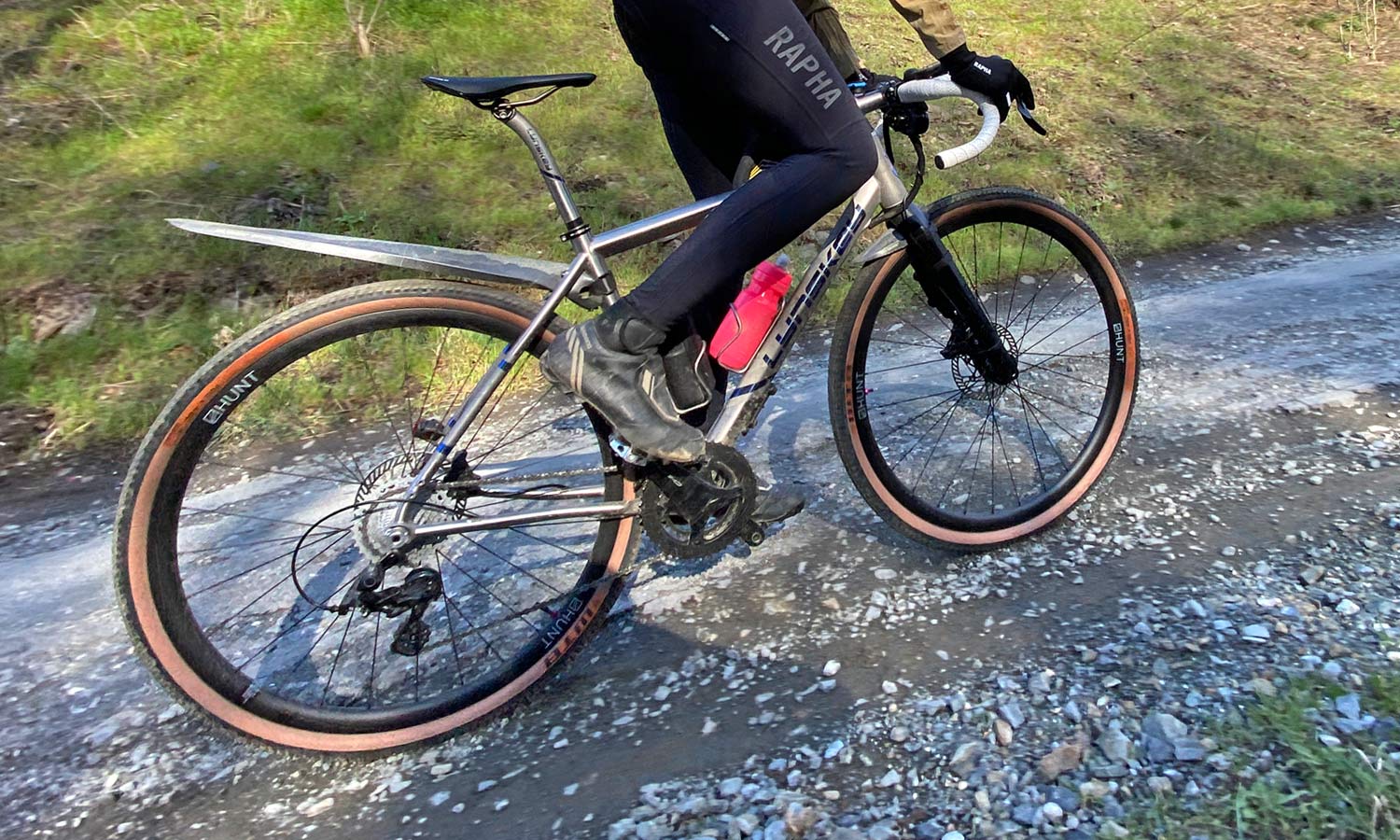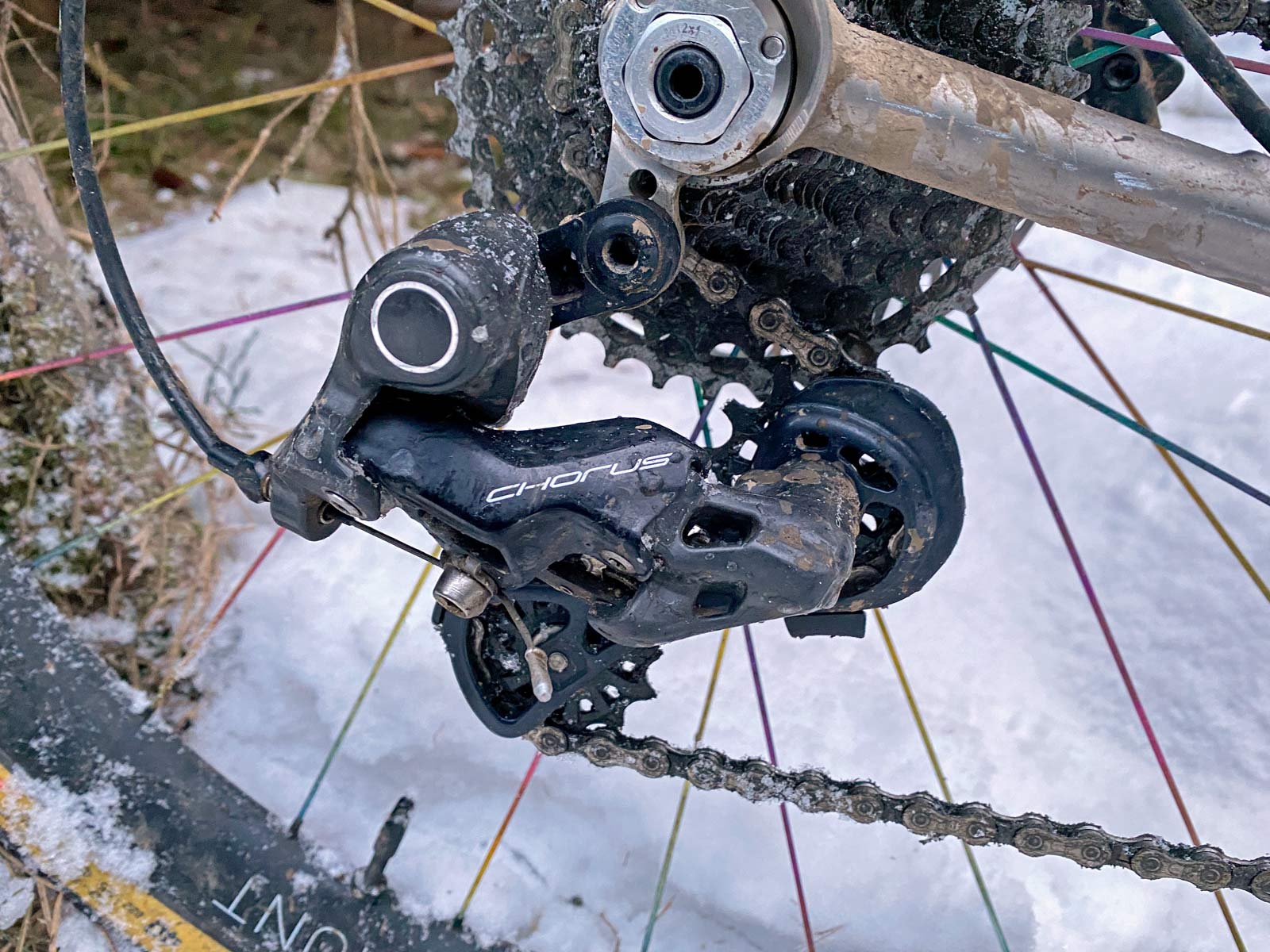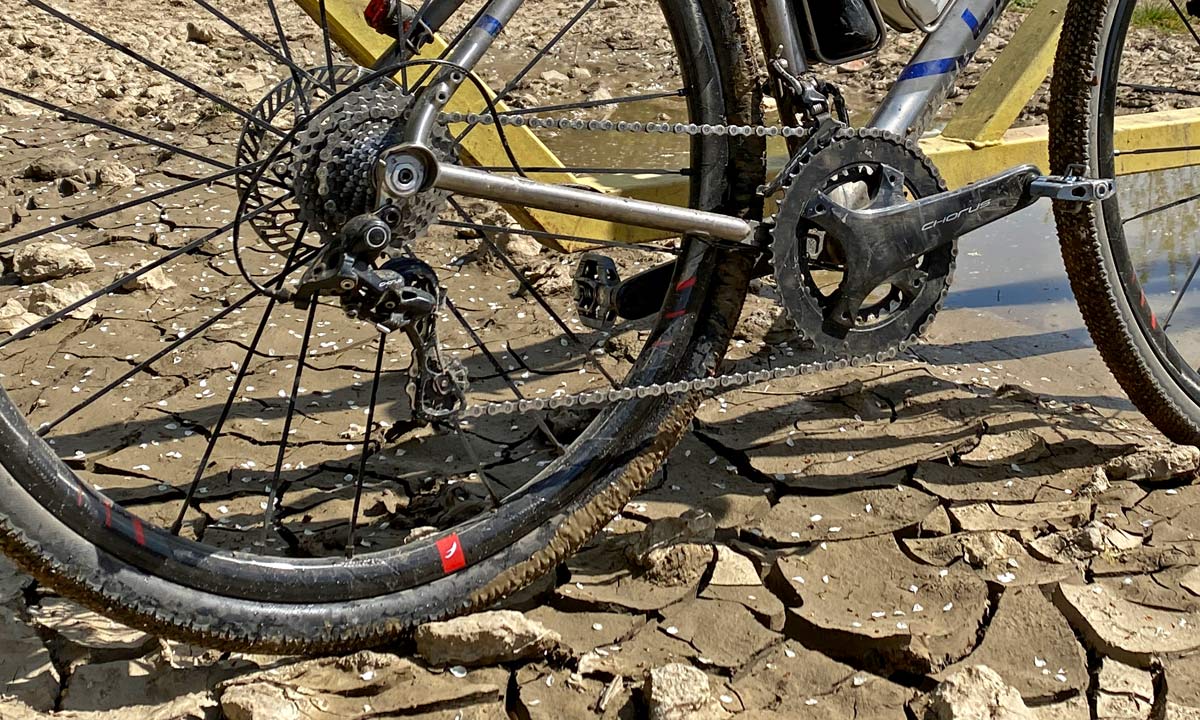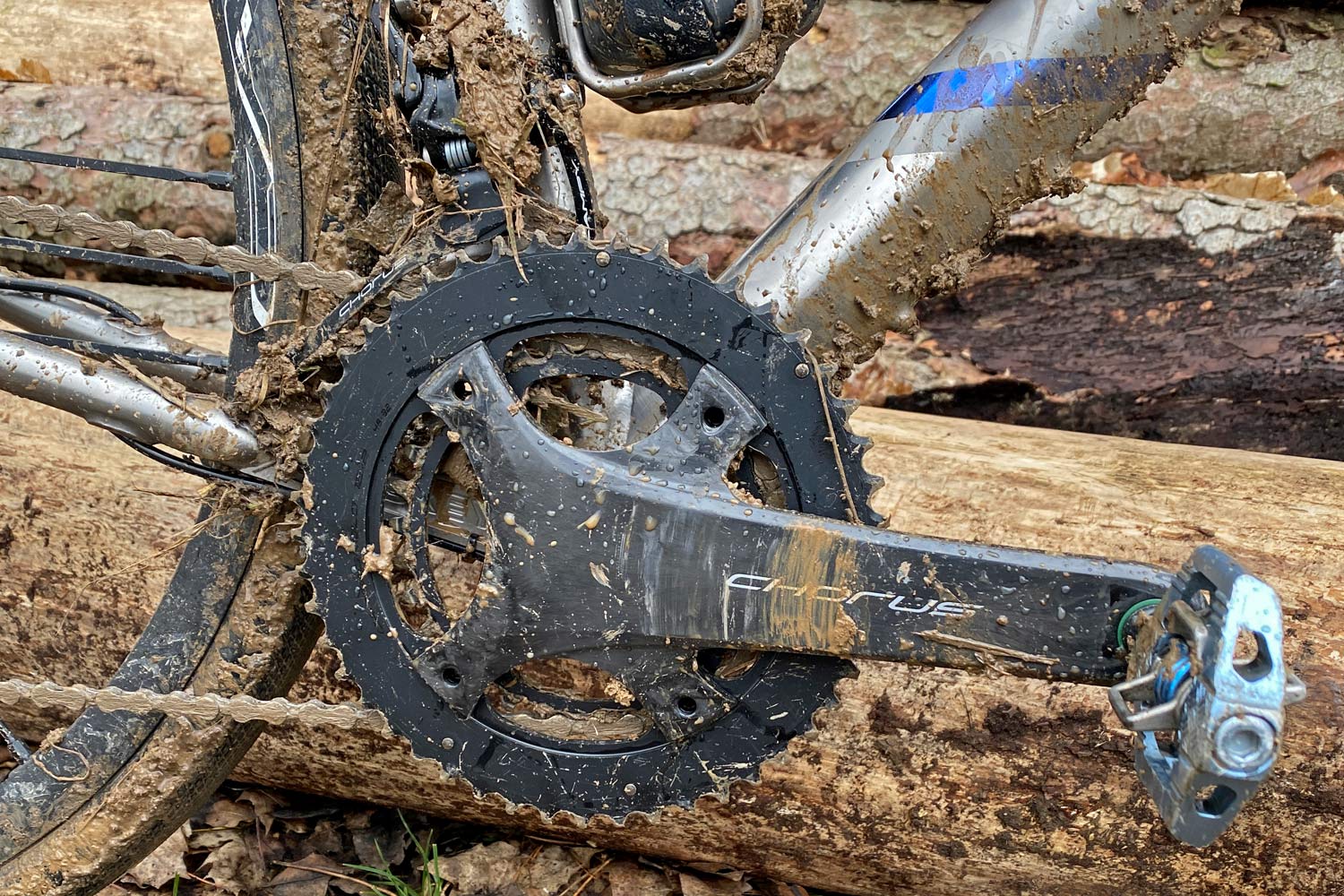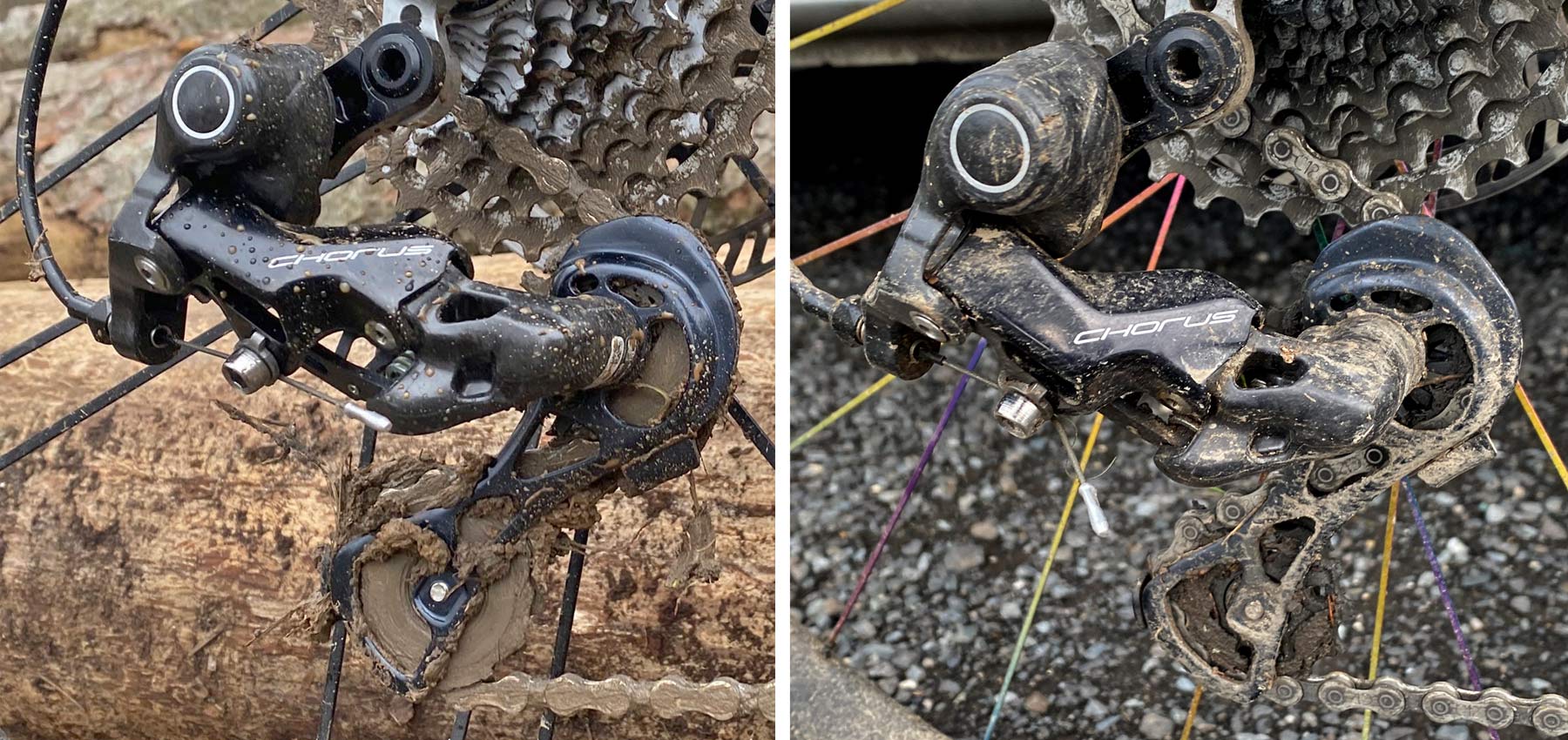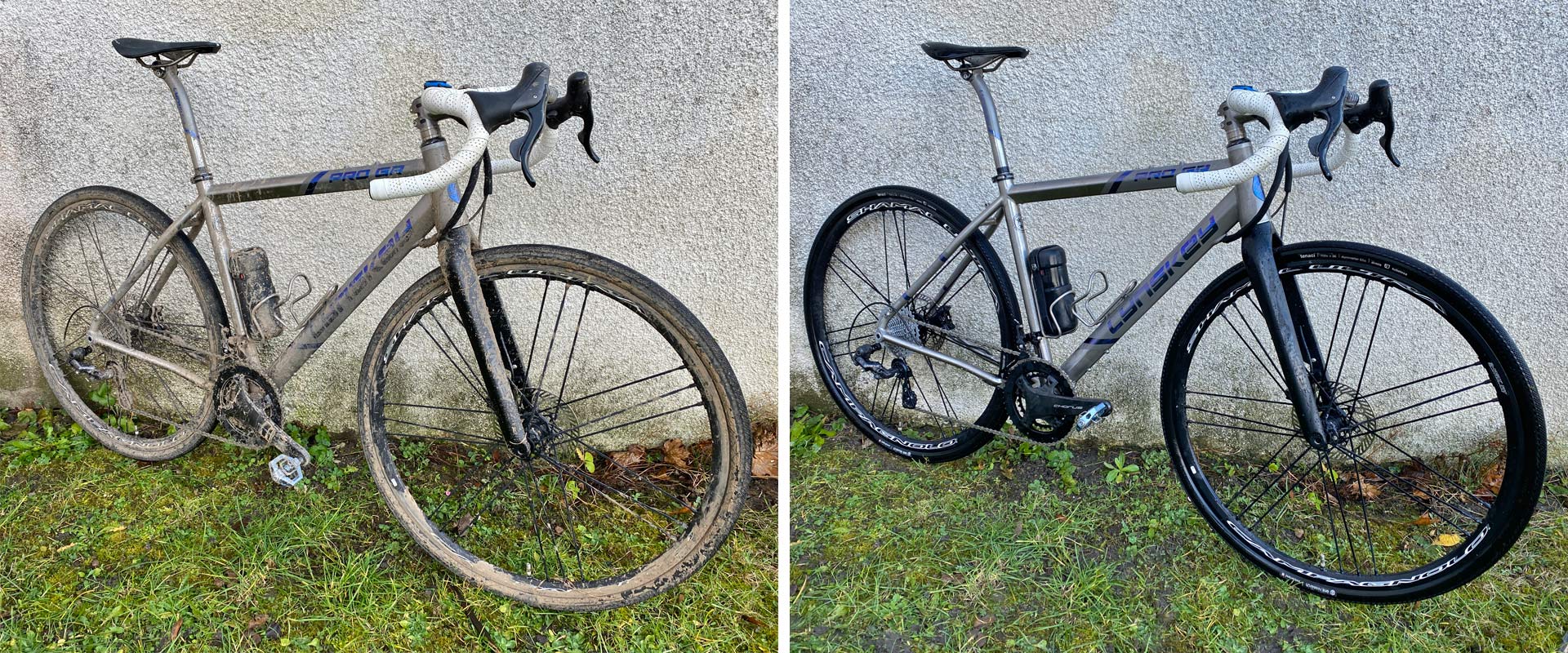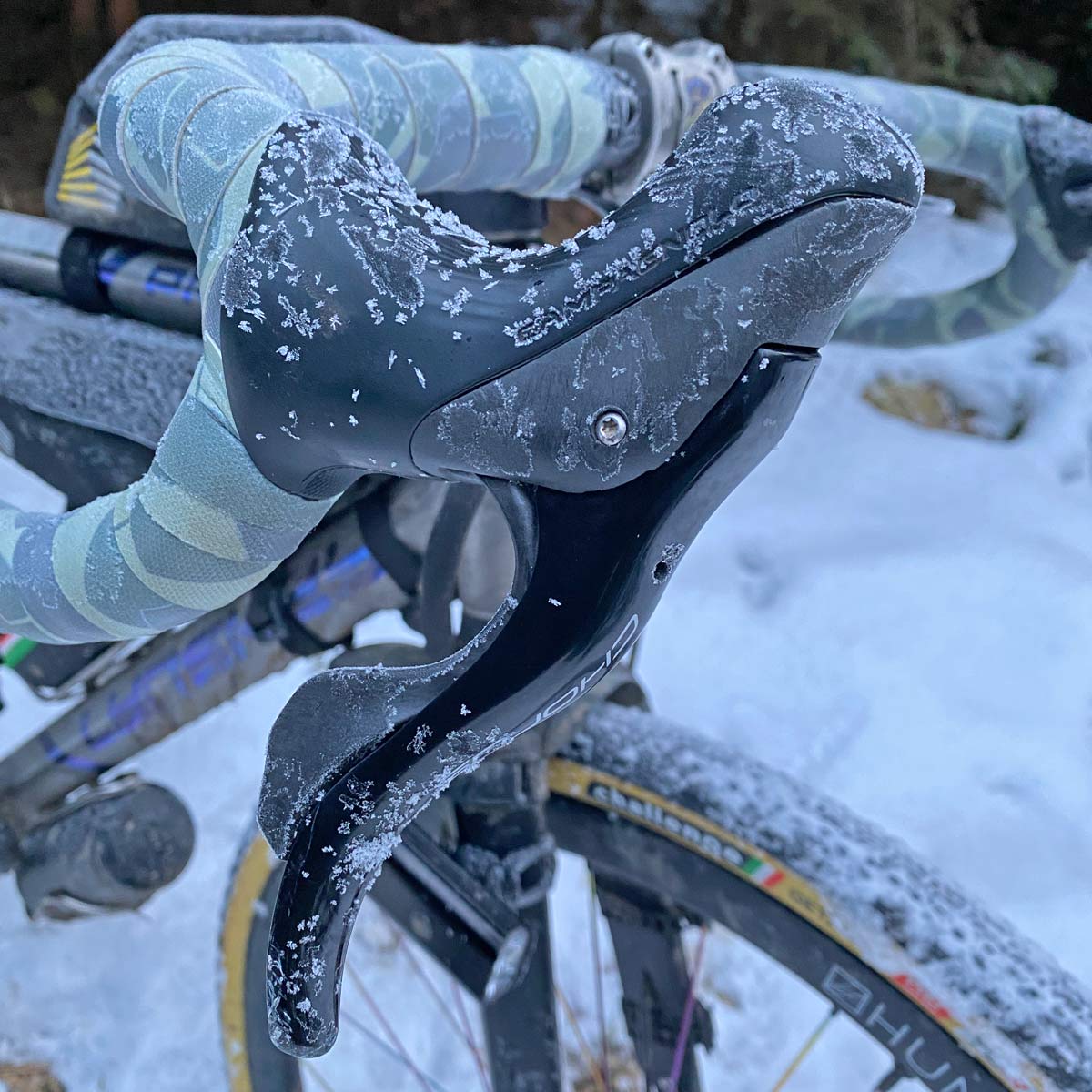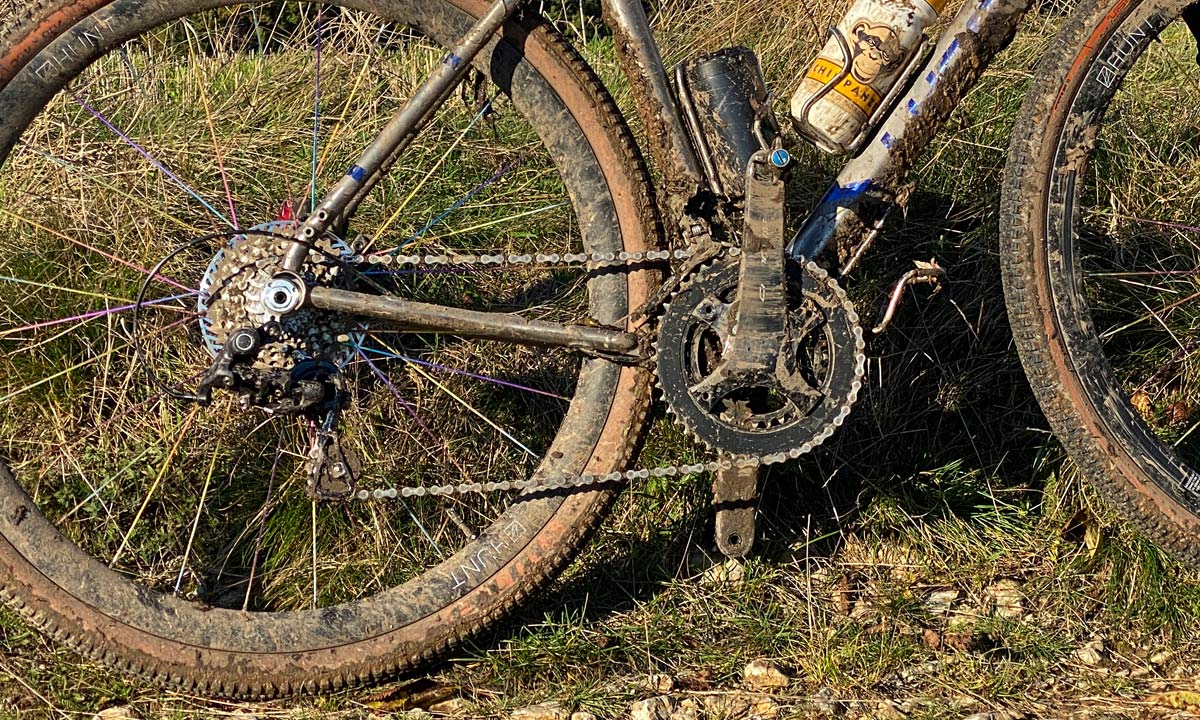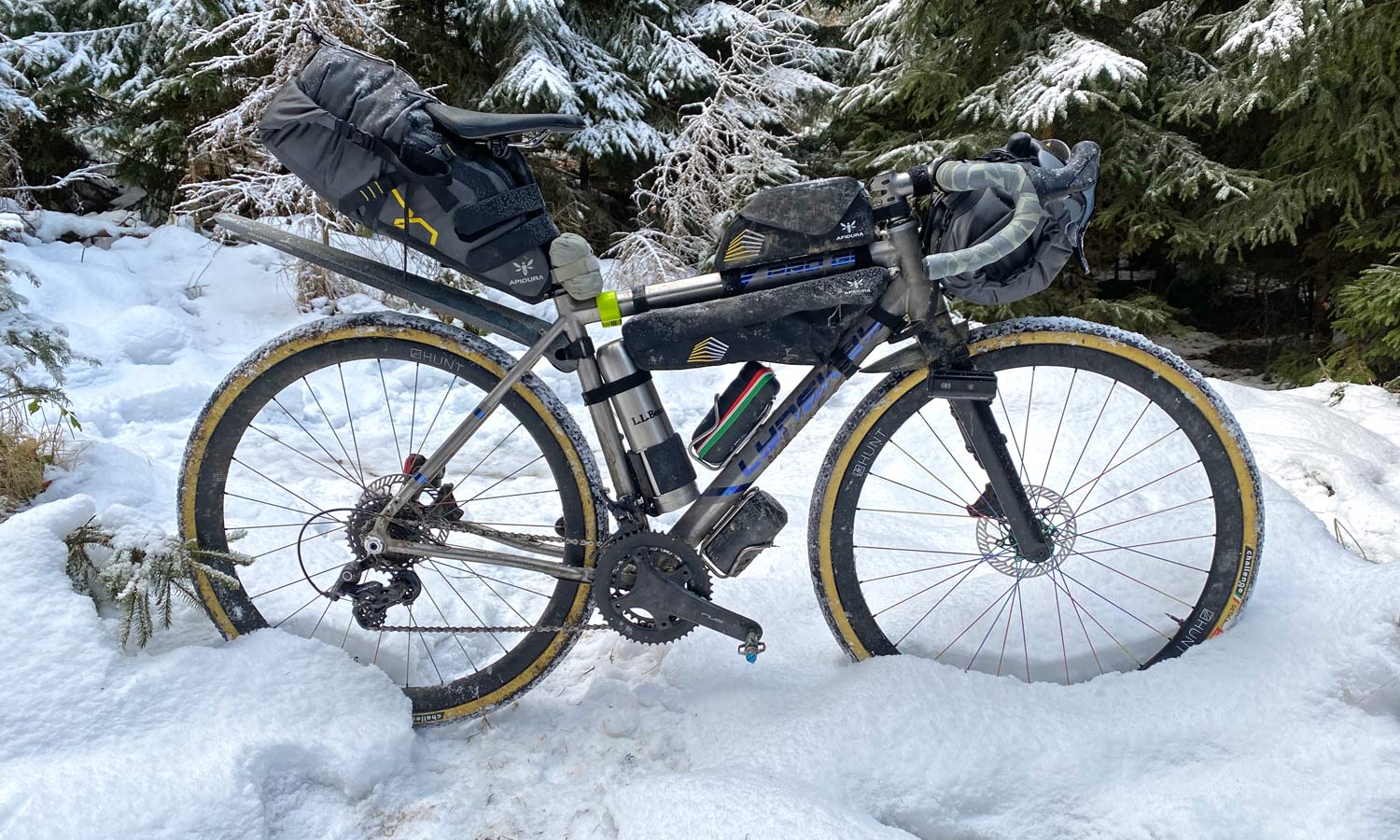Reviewing a Campagnolo groupset for gravel riding these days, Chorus 2×12 isn’t the first model that pops into people’s heads. But while the newer 1x 13-speed Ekar is undeniably a huge advance, and shift off-road for the classic Italian drivetrain maker (and I’ll get to that more), the capabilities of the slightly older 12-speed Chorus group cannot be ignored for mixed-surface riding from all-road to bikepacking touring.
Campagnolo Chorus 2×12 all-road & gravel bike gruppo
I’ve spent just over one full year now riding Campagnolo Chorus 12. And its performance is just as good as when I started. Fast shifts with a positive click of the lever – up to 5 downshifts or 3 upshifts in a single throw, excellent braking power & modulation that is hard to beat on a dropbar bike, and overall reliability through rain, mud, snow, and even a bit of sunshine.
And for road riders looking to simply venture off the tarmac a bit, it carries over the familiar look and function of a traditional road double drivetrain, albeit with lower and wider gearing to tame steep hills & loose surfaces.
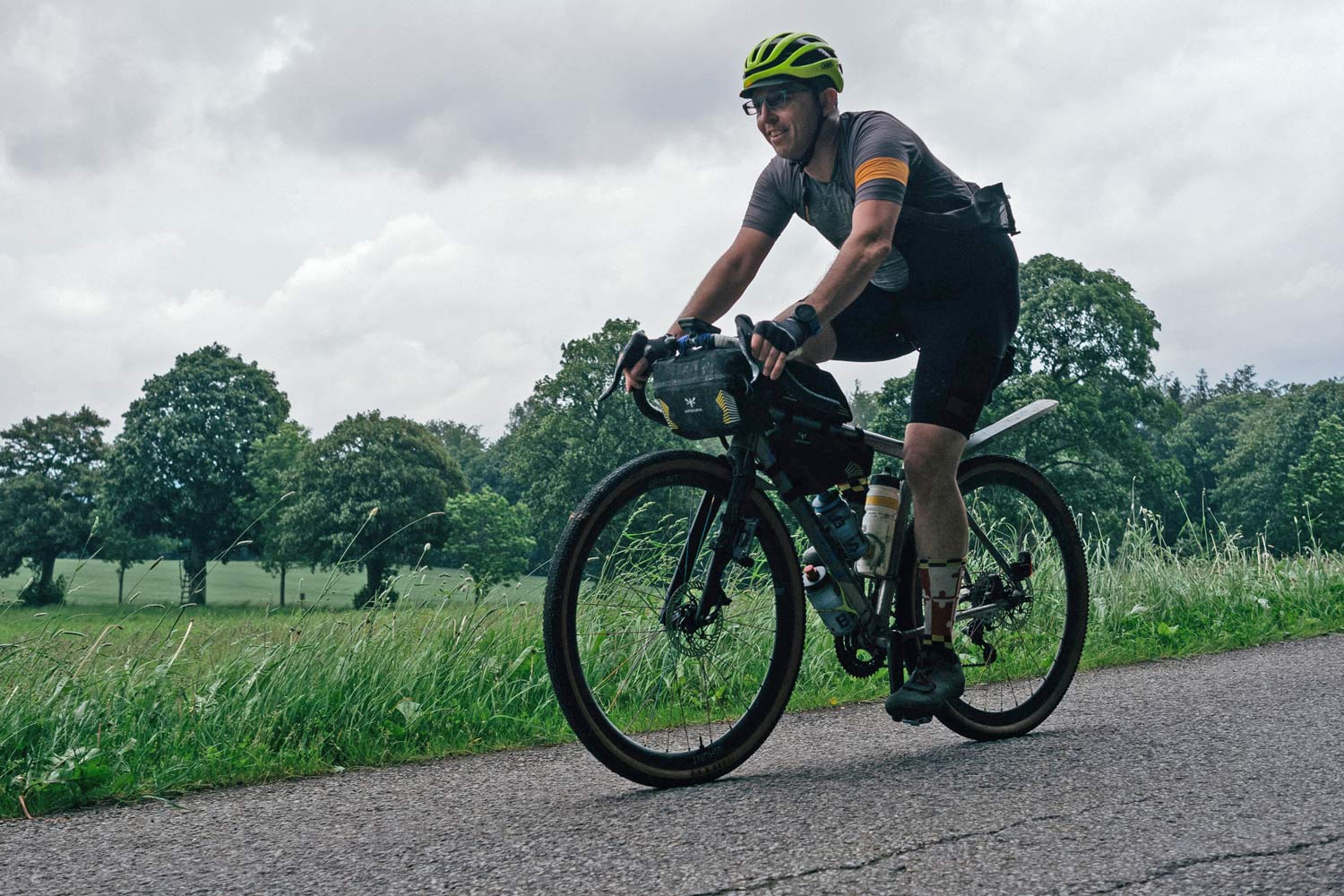
Now, I’ve been riding Campagnolo groupsets off-road since putting Record 10-speed on my steel cyclocross bike about two decades ago, so getting Campy dirty is nothing new for me. The first-gen disc brake H11 Chorus was the Campy group I gave such a beating to in a long-term review. There are a lot of similarities in the performance of that previous Chorus group and this newer one. This generation adds a couple hundred extra grams, but that is a welcome sacrifice for the much more usable gearing and savings of over 500€.
All-road/gravel/bikepacking build details
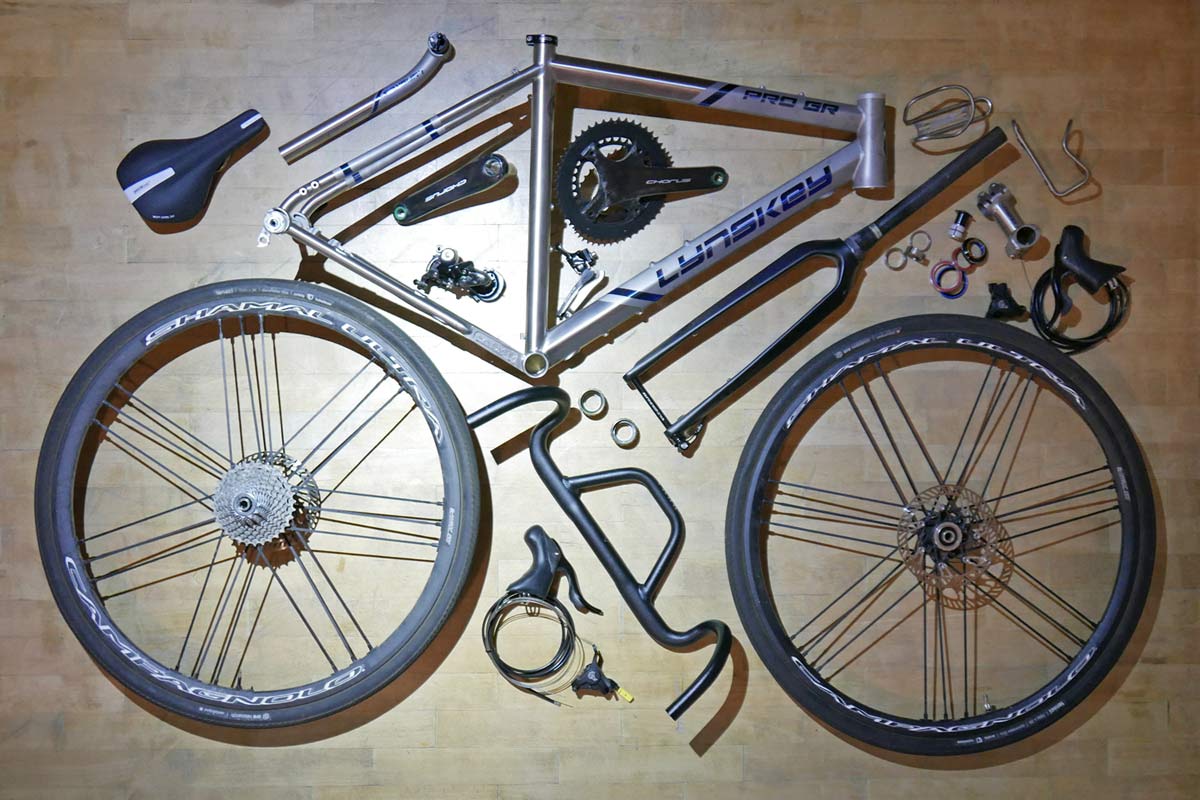 Looking to take advantage of the endurance all-roadside and fast gravel perspective of the Chorus groupset, I mounted it to a suitably fast gravel bike – the titanium Lynskey Pro GR. With its diamond-shaped front triangle and a rear end that balanced room for big tires with stiff, bent tubing & good 2x chainring clearance, it made a perfect match for the versatile Campagnolo groupset.
Looking to take advantage of the endurance all-roadside and fast gravel perspective of the Chorus groupset, I mounted it to a suitably fast gravel bike – the titanium Lynskey Pro GR. With its diamond-shaped front triangle and a rear end that balanced room for big tires with stiff, bent tubing & good 2x chainring clearance, it made a perfect match for the versatile Campagnolo groupset.
This bike has made its way through a number of variations in the last 12 months – most notably different cockpits, wheels & strap-on accessories (and will get its own detailed review, coming soon). But the subcompact Chorus 48/32 x 11-34T remained constant throughout, adapting well to mixed-surface riding from flat asphalt to bits of steep forest singletrack.
Individual components – Actual weights
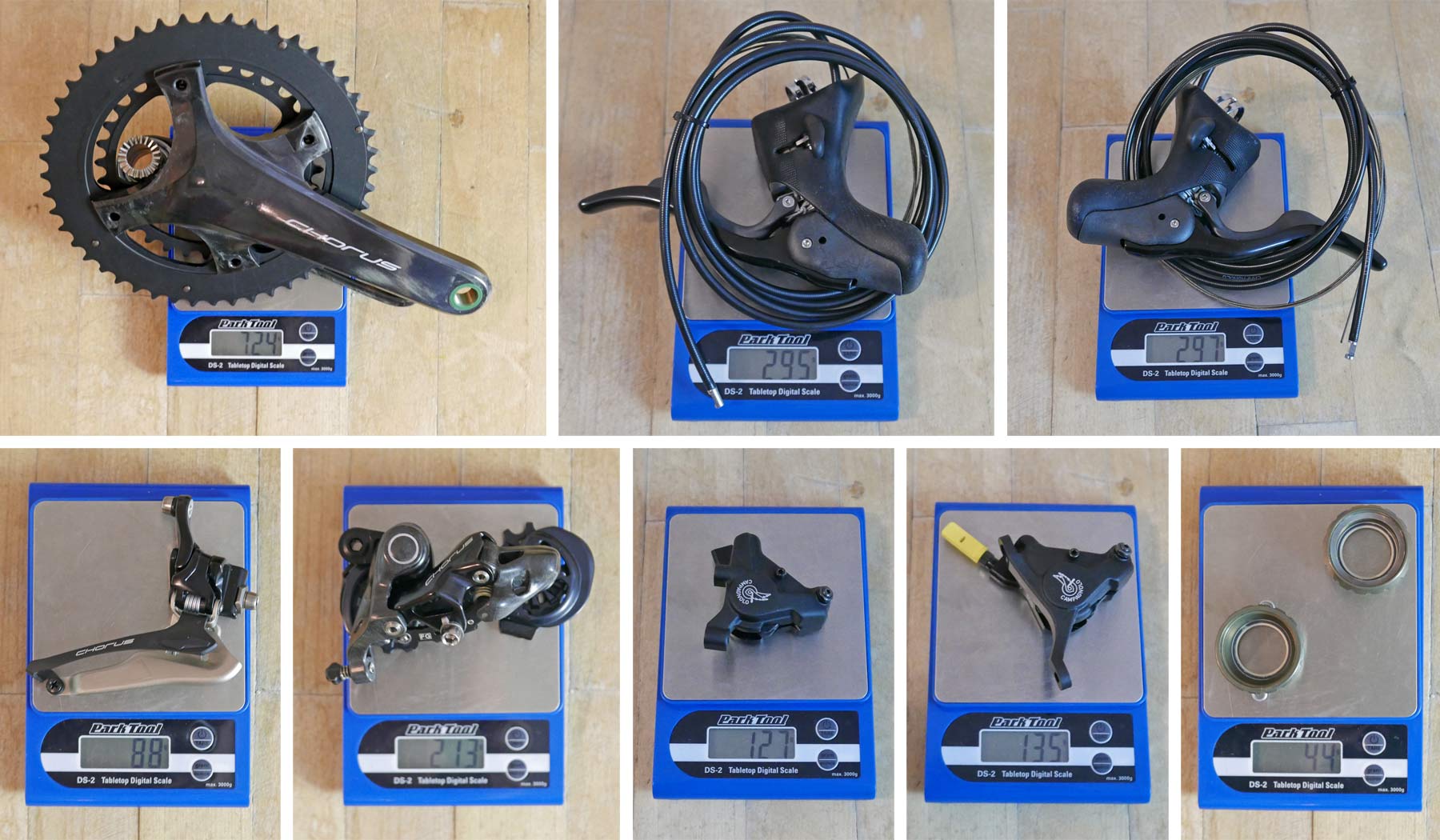 Weight-wise, there was little bit of deviation from the pre-production components I first weighed almost two years ago now – plus or minus from one item to the next. In the end this set of components weighed about 48g more, for a grand total of 2757g for the entire setup.
Weight-wise, there was little bit of deviation from the pre-production components I first weighed almost two years ago now – plus or minus from one item to the next. In the end this set of components weighed about 48g more, for a grand total of 2757g for the entire setup.

As seemingly minor as it may be, the standout feature of the Chorus group might just be its gearing. First, there’s the Campagnolo-first sub-compact road double crankset with a 48/32 set of chainrings. Then, add this steel 11-34T cassette, with the two largest three-gear clusters machined from solid blocks.
That results in some low Chorus gearing of 48/32 x 11-34T, yielding a 464% range (0.229-1.063 ratios at the rear wheel). That’s remarkably similar to the widest spread offered by Ekar’s 9-42T, 467% range cassette (a slightly easier 0.237-1.105 ratio at the rear wheel when paired with Ekar’s smallest available 38T chainring.)
Review: Riding Campagnolo Chorus 2×12 in all conditions & over all surfaces
The biggest obstacle I run into when riding and testing any all-road or gravel components is unexpected mud. Cyclocross means mud is inevitable, and road’s worst worry is rain. But across all seasons, if you live in any climate that gets wet or experiences freeze/thaw cycles, a perfectly smooth hardpack dirt or gravel road can quickly devolve into slippery & sticky mud at a moment’s notice.
The tall arm of the Chorus front derailleur makes front shift action fast & easy, but it also can be a magnet for collecting mud. Thankfully, it gets the same reversible cable clamp bolt as Record/Super Record, so I have the bolt head facing forward which increases tire:derailleur clearance by an extra 5mm.
Surprisingly, mud build-up never seemed to affect front shifts, but I did experience chainsuck once that required me to scrape the mud off the bike to keep riding (on a ride even muddier than this one.)
Mud was maybe more of a concern out back. The Chorus 12 rear derailleur doesn’t have a ton of space between its cage & pulleys. So riding in sticky mud tends to gum up the works. But, while mud does accumulate, the shape of the cage edges does manage to cut a lot of the mud off.
I think really the root problem here for off-tarmac riding is that the Campagnolo pulleys have such complex pulley shapes – with tiny window cutouts between each tooth and raised ridges that radiate off each tooth – that they pack up with dirt & grime. I suspect that Campy must think that they improve chain engagement while minimizing weight (because the same things are on Ekar up to Super Record.)
But I would be happier if they went away. Those cutouts accumulate mud, but also regular road grime picked up by any extra lubricant on the chain, and are the most difficult part of the drivetrain to keep clean.
And yes, I did clean the poor bike & Chorus drivetrain. As an all-surface do-it-all all-road & gravel bike, I definitely put the Campagnolo Chorus 2×12 groupset through some harsh riding conditions during testing. But I also did maintain it, keeping the chain lubed and the cables as uncontaminated as possible.
I will admit to blasting it a few times with the medium-pressure bike-specific Muc-Off Press Washer to knock the worst mud off it. But I was mostly careful around the bearings, not so much around derailleur pivots. Nonetheless, a year later and everything still pivots and spins smoothly.
Wait, did I manage to not talk about the excellent braking performance, across all conditions? The beauty since the Campagnolo’s first disc brakes originally co-developed with Magura, remains in these brakes that are now entirely made by Campy. The brakes use the identical hydraulic calipers as before (a part of the more expensive groups) have excellent pad retraction for quiet running, and composite-backed pads that squeal less than the road disc average. Essentially you get the exact same braking performance as Record & Super Record.
Chorus retains reach adjust to the alloy levers (not an issue for my large hands, but a big deal for those with shorter fingers) while losing modulation adjustment. Instead, they sit in between the high & low leverage ratios offered in H11, Super Record & Record. While I prefer the high leverage on SR, I was perfectly content with happy medium here.
12 months of wear in rain, mud & snow
How does the group look after a year of hard riding? The Chorus carbon cranks have seen the harshest abuse from riding in difficult conditions. But since Campagnolo essentially pulls their carbon components straight out of the mold, with no significant extra finish or clearcoat – the worst I’ve ended up with is the C, H & O worn off and a bit of dull polishing from muddy shoe covers. (These cranks haven’t even had the dirt wiped off from the last snowy & muddy adventure, so a little elbow grease will bring back almost everything except that logo.)
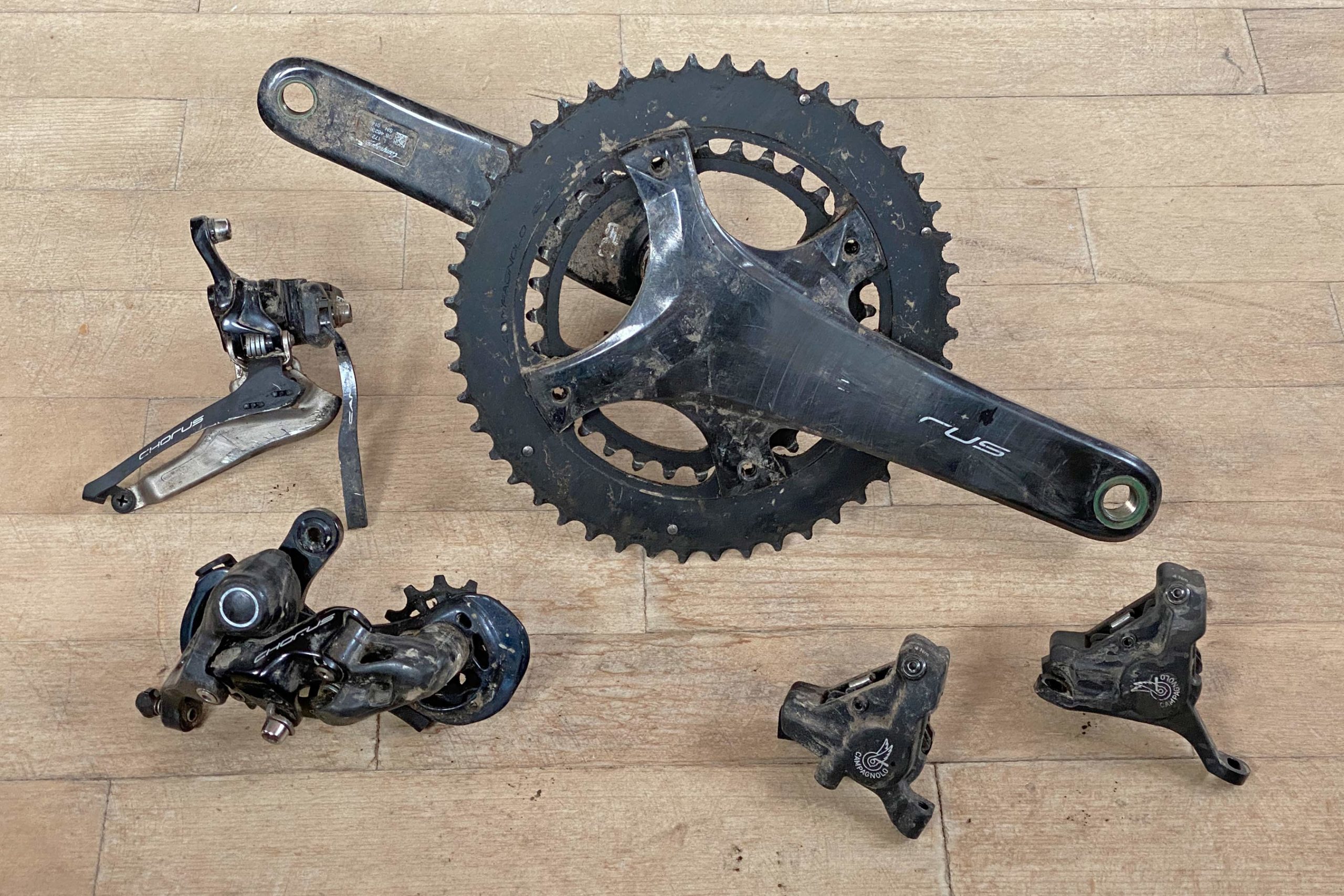 Between 2500-3000km of dirty riding, and the chainring teeth still have plenty of life left in them, as do the rear derailleur pulleys. The bottom bracket was dirt when I pulled it apart, but the bearings were still sealed with clean grease inside. And the original brake pads are about half worn, still plenty of kms remaining.
Between 2500-3000km of dirty riding, and the chainring teeth still have plenty of life left in them, as do the rear derailleur pulleys. The bottom bracket was dirt when I pulled it apart, but the bearings were still sealed with clean grease inside. And the original brake pads are about half worn, still plenty of kms remaining.
The only thing I will replace as I rebuild this group on the next bike, will be a new set of shift cables. And then of course a fresh brake bleed since I’ve opened up the hydraulic system.
The choice: Chorus 2×12 vs. Ekar 1×13
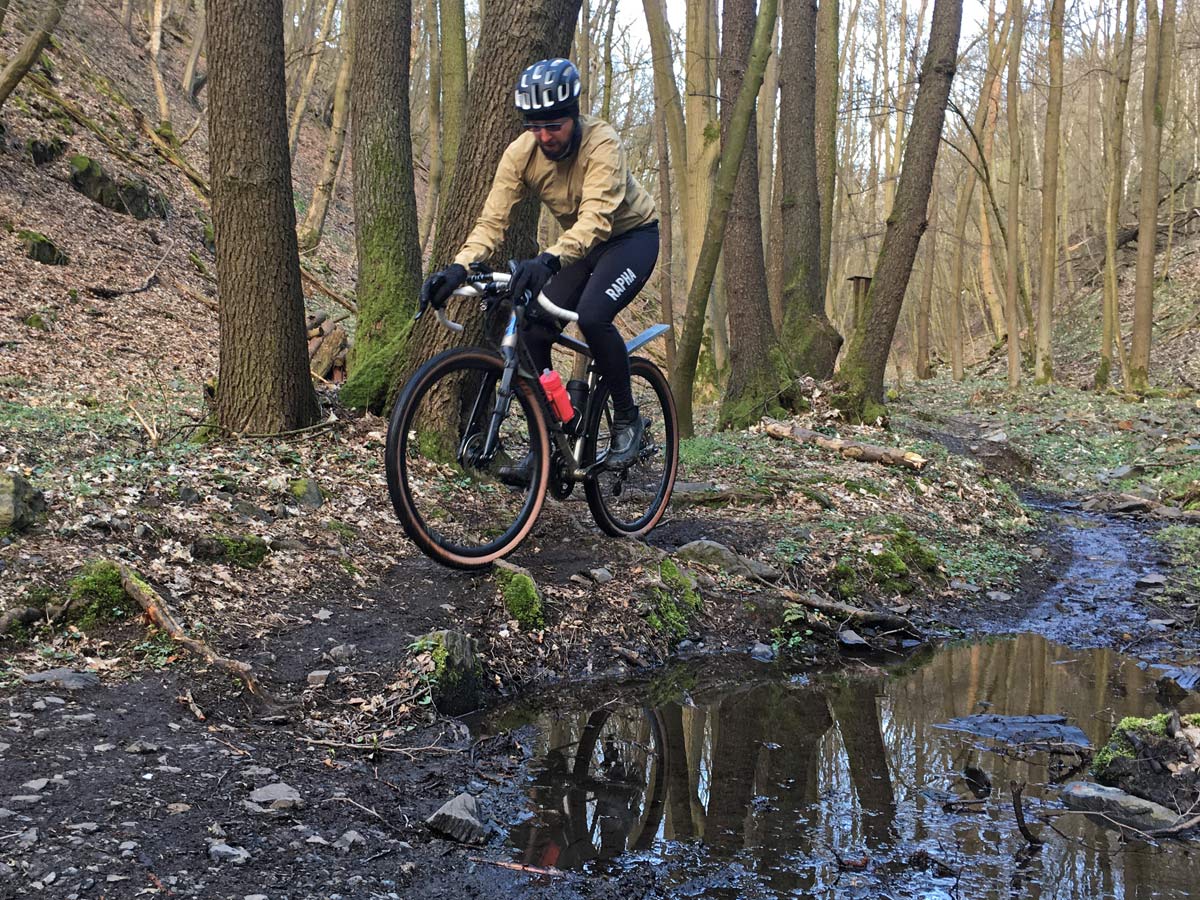
The most obvious question here is which Campagnolo groupset is better for you – Chorus 2×12 or Ekar 1×13? Of course, the answer isn’t so simple. I’ve ridden both extensively on tarmac, gravel roads & off-road. Both perform well across almost all all-road conditions, and the dreaded chain drop that many people fear without a clutched derailleur has maybe happened twice to me – once on a stupidly rough descent I had no business riding, and once in an unexpected crash on a completely iced-over road under snow where chain retention was the least of my concerns.
Chorus offers the same wide range as Ekar, but isn’t quite as low as Ekar (lowest 32:34 for Chorus vs. 38:42 Ekar). That gives Ekar the advantage for the steepest riding, but it’s a close one.
Ekar claims to be the lightest gravel group, and it is light. But totaling up the real weights of all these Chorus components vs. a real Ekar build, and Ekar only edges out by around 20g.
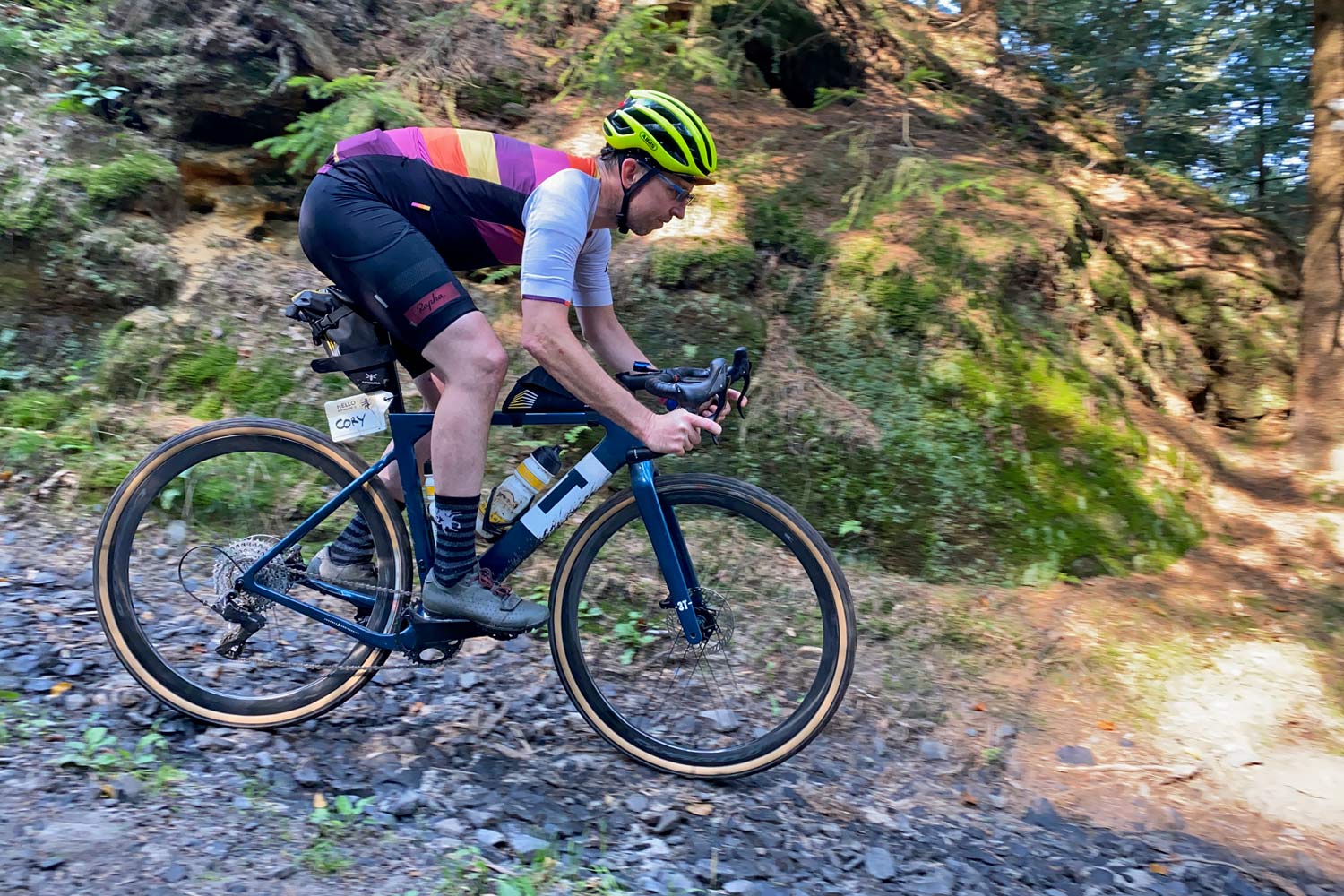
Ekar is also about 100€ cheaper.
But you will possibly have to factor wheels and maybe cassettes into that cost as well. Because of the versatility of all-road & gravel bikes (and the hassle/mess of swapping tubeless tires), I feel like it is safe to assume that many people who buy either of these groups will be likely to want more than one wheelset setup.
Ekar requires the new N3W freehub standard which can’t be retrofit on all wheels (but should be quite universal going forward). Your current wheelset is likely not compatible, plus a second 13-speed cassette will cost 1/3 more than Chorus 12-speed.
So you will likely have to do the mental calculations yourself.
Final Thoughts: Campagnolo Chorus 2×12 all-road groupset
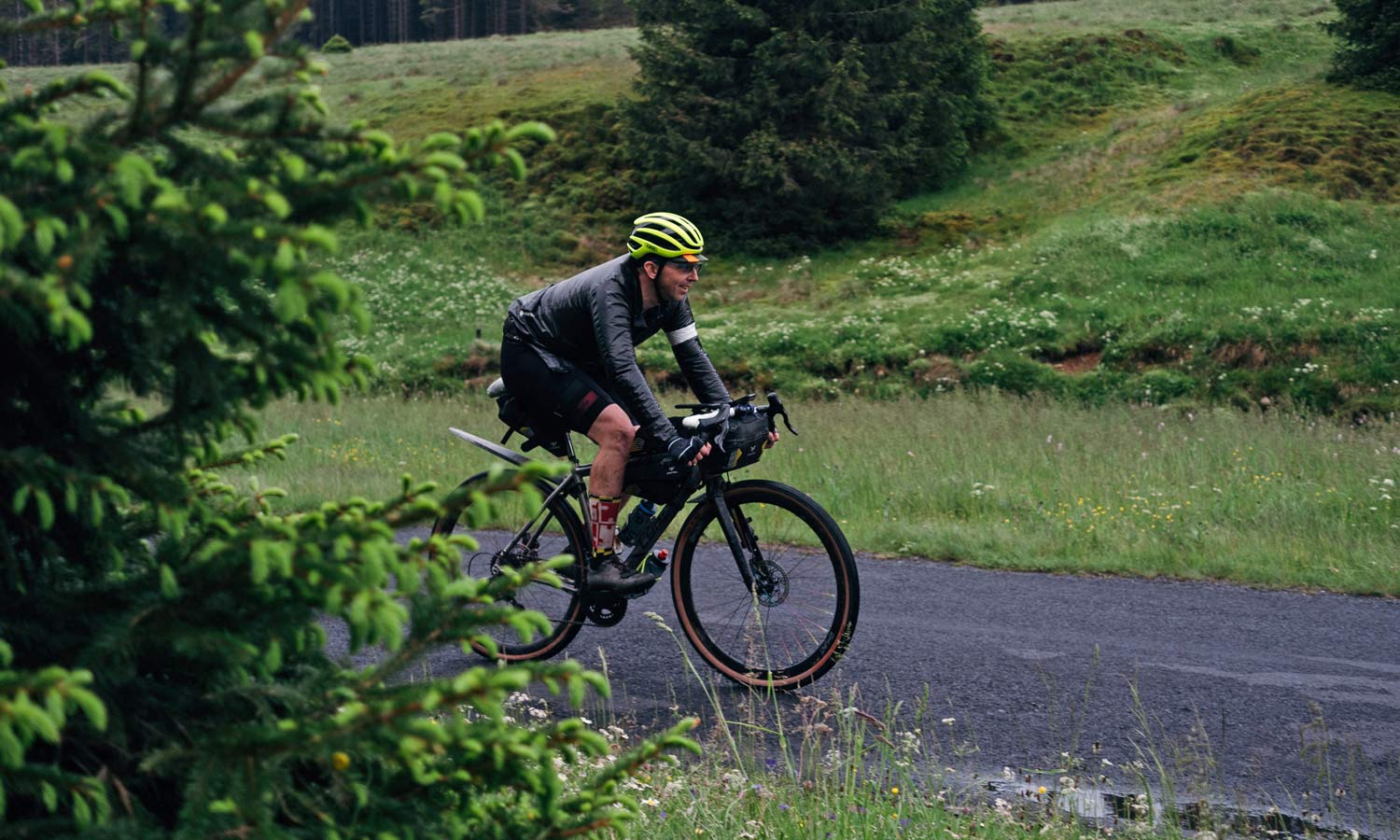
As for me, I have another mechanical Campy 12 bike in my quiver (my carbon all-road Festka One/Rover early prototype) and my wife a 12-speed EPS gravel bike. So sticking with 2×12 for all-road & gravel riding means we can seamlessly swap wheels, and more importantly tires, back and forth on three bikes to have the best setup for the day.
I can’t say I have any real complaints with the Chorus groupset. And as I’ve pulled it off this ti Lynskey Pro GR to send that frame back to Tennessee, I’ve already set my sights on a steel bike in my workshop, waiting to see how Chorus rides for the next twelve months.
